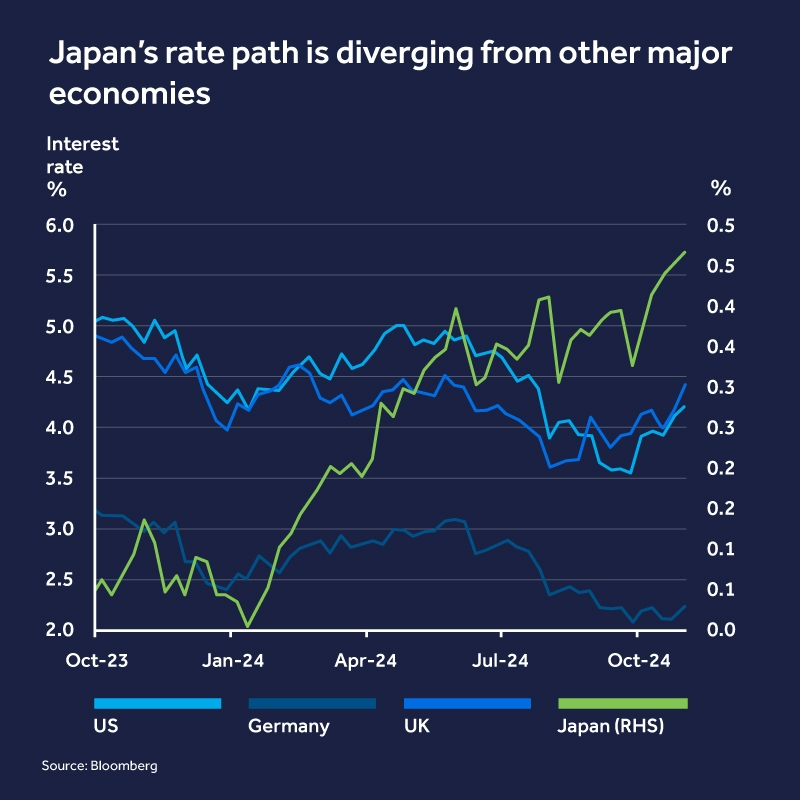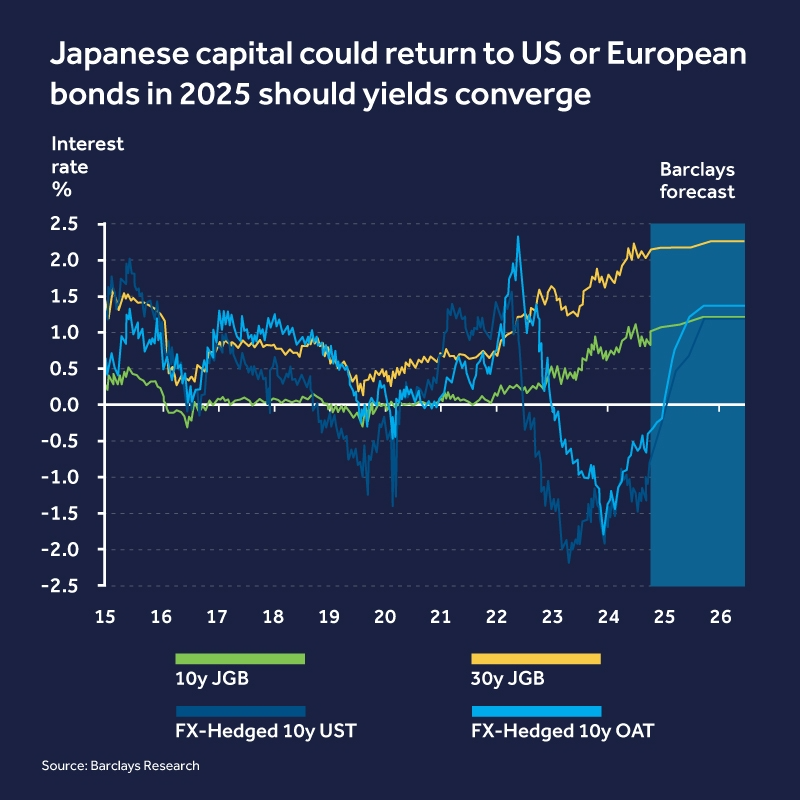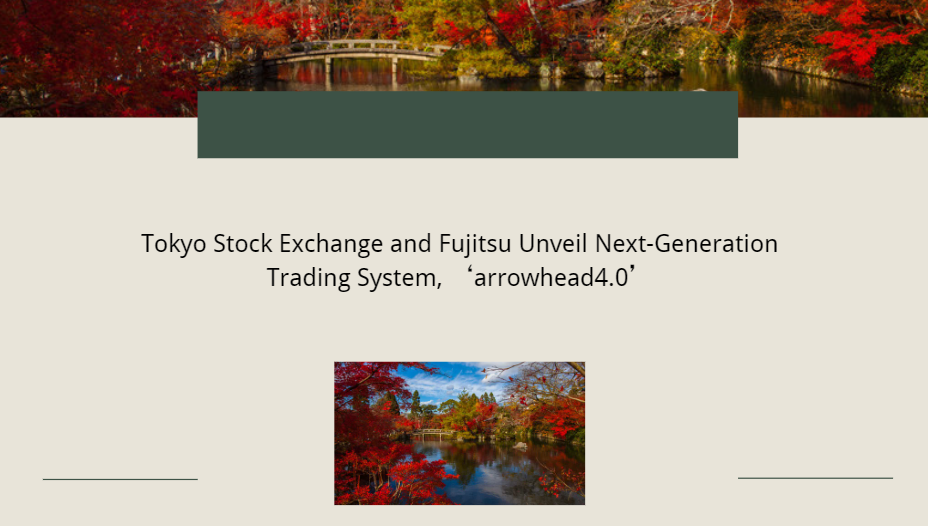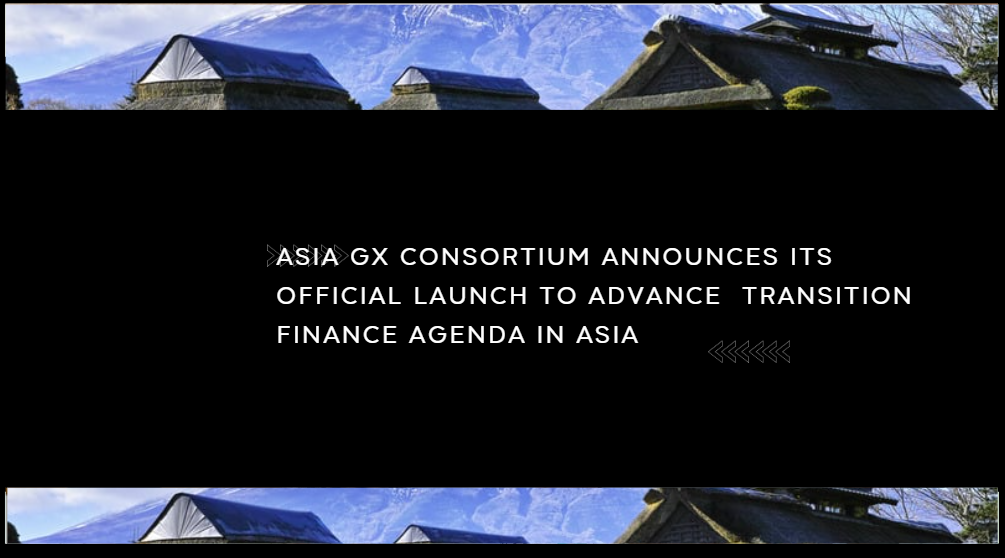Japan: A market in motion, a world in flux
Contributors: Yun Zhang, Tomohiro (Ace) Mikajiri, Masaru Yamada
After decades of economic stagnation, Japan has emerged from a negative interest rate environment, while many other major economies are moving in the opposite direction by cutting rates. This divergence is generating volatility and reigniting broader investor interest. Our Global Markets team explore the implications of these shifts and why now is a critical time to assess investment strategies.
1. Divergence is causing volatility
For many years the Bank of Japan (BOJ), maintained extremely low or negative interest rates to boost inflation and stimulate economic growth, in contrast to the US Federal Reserve and other central banks, which maintained higher rates to combat inflation. This led Japan-based investors to seek higher returns abroad, while the country's low-interest-rate environment was highly favourable for investors engaged in carry trades.
However, as Japan now shifts from its ultra-low-rate policy, the rate gap with the US and other economies is beginning to narrow, possibly resulting in significant volatility and an unwinding of the carry trade. This means that for the first time in years, investors have greater flexibility in managing JPY rates and hedging strategies.

Crucially, this volatility is likely to continue. Wage growth, particularly in the service sector, is progressing in line with the BOJ's expectations, leading many to anticipate another interest rate hike in December 2024 or January 2025.
In addition, politics in the US and Japan, along with potential fiscal expansion, as well as rising geopolitical tensions, could further contribute to greater volatility.
Compounding this uncertainty is the dynamic between central banks. Asia Pacific central banks are under pressure to defend their currencies depending on the speed and magnitude of the interest rate differentials between APAC currencies and USD. The timing and magnitude of the next moves from the Federal Reserve will undoubtedly have ripple effects on Japan's financial markets, as well as on other markets across the region.
2. Everything is connected
Rate policies play a critical role in shaping both FX and equity markets, especially in the complex dynamics between US and Japanese rates.
The interconnectedness of global markets was evident during the carry trade-driven volatility in August 2024. Instead of a simple JPY/USD carry trade, many investors held multiple layers of positions, including options and pairings with various emerging market currencies. When the tide shifted on 5 August and triggered widespread selloffs in equities, the impact reverberated across global markets, highlighting how tightly interwoven these trades have become.
This underscores the importance of adopting a broad, global perspective when analysing market conditions, as developments in one region increasingly influence assets across the globe.
3. New opportunities
With the narrowing rate differential, the relative attractiveness of foreign bonds for Japanese investors has diminished. Rising domestic yields lessen the incentive to assume currency risk or incur currency hedging costs associated with overseas holdings. This shift has prompted Japanese investors to reallocate capital toward domestic bonds over the last 12 months.
However, according to analysis from Barclays Research (see graph below), FX-hedged yields on 10-year US Treasuries (USTs) and 10-year French government bonds (OATs) are expected to converge with 10-year Japanese Government Bonds (JGBs) yields by mid-2025. Should this occur, Japanese investors who previously retreated from foreign bonds may re-enter these markets around that time.

For investors outside Japan, yields on JGBs and corporate bonds are becoming more competitive. Furthermore, for those willing to take on currency risk, the yen's potential for appreciation in the longer term could provide substantial returns, both from asset performance and currency gains.
Regarding carry trades, as long as there remains an interest rate differential, the carry trade remains viable.
However, there are a lot of unknowns at play due to the nature of interconnected markets and volatility caused by a world in flux. As a result, these opportunities come with heightened risks, requiring investors to remain vigilant and globally aware.
“Managing investments in such volatile markets requires partnering with a team connected across the globe. One that truly understands the dynamics and interconnectivity between markets and is constantly monitoring the speed of change 24/7,” says Zhang.























































First, please LoginComment After ~